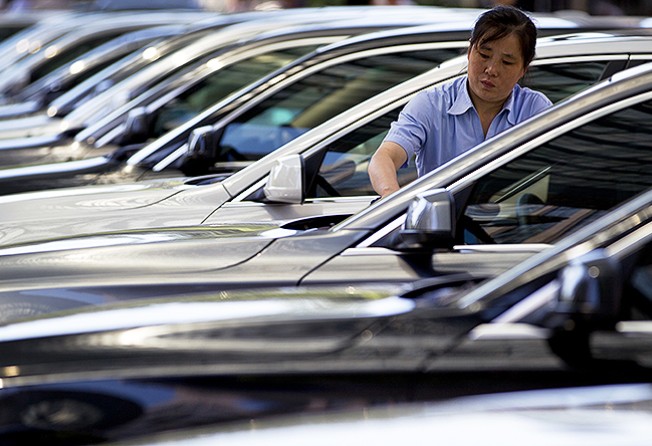Heavy hand of government is driving China's car industry into the ground
Hu Shuli says subsidies for electric vehicles need to be more in line with market principles, to create a level playing field for foreign competition

In the first week after the Lunar New Year break, two events caught the eye. One was President Xi Jinping's interview with Russian media in Sochi, in which he described China's reform challenge now as being "10 per cent planning, 90 per cent implementation".
The other was the continuing media focus on the push by electric carmaker Tesla into the Chinese market, and the inevitable questions about China's electric ambitions. Why, we may ask, is the domestic electric car industry still sputtering despite the government's pledge to "overtake on the bend"?
As Xi has rightly noted, while China should adopt the big-picture approach in some areas of reform, in others we have to start with the details, using one small change to spark a transformation of the whole. The development of the electric vehicle industry can be one such catalyst for change.
Since 2009, China has pushed its carmakers to develop cutting-edge technology to take the lead in electric vehicle development, in order to leapfrog the market leaders of petrol-driven vehicles. In May 2010, the government introduced a pilot programme offering subsidies for the purchase of new-energy vehicles in six cities. At the time, officials optimistically forecast that as many as 500,000 such vehicles would be on the road by 2015.
Disappointingly, by the end of 2012, only 4,400 Chinese-made hybrid vehicles had been sold to private individuals. BYD, China's leading electric carmaker, sold only 2,000 all-electric vehicles. By contrast, in 2013 alone, some 22,600 Nissan Leafs were sold in the US, adding to over 50,000 sold globally. In the US, electric vehicle sales last year reached 96,000.
Despite years of hard work, Chinese carmakers are still streets behind global leaders in terms of overall skills and marketing know-how, even though some domestic firms lead the market in specific technologies. Instead of overtaking on the bend, Chinese carmakers have been left in the dust.
The problem is systemic.
Given the country's energy bottleneck and serious air pollution, the government is understandably pushing hard for a switch to green vehicles. However, the typically heavy hand of government in China has led to severe market distortions. Not only have both the central and local governments been generous with subsidies, but local governments have also tried to protect domestic manufacturers by blocking foreign competition, openly and covertly.
Protectionism has killed the spirit of innovation and warped the rules of fair play. Thus, China's budding car industry has languished.
Today, its lackadaisical performance is worrying its supporters and turning off consumers. Even the State Council has taken notice. Yet no solution is in sight.
In September last year, four ministries, including the Ministry of Finance, jointly announced adjustments to the subsidy programme. In the notice, they clearly said local officials should not discriminate against foreign manufacturers, even specifying that at least 30 per cent of subsidised vehicles should come from a foreign carmaker. But, with few ways to monitor practice, such orders are easily ignored.
More worryingly, in another directive issued this month, the government avoided mention of this altogether.
Subsidies are commonly used by many governments to promote alternative energy. In the US, for example, apart from the subsidies offered by the federal government, some state governments also enact policies to promote electric cars. However, the market principles of fair and open competition still apply and foreign players are treated the same as domestic firms. Today, the best-selling electric cars in America are the domestic Holden Volt and the Japanese-made Nissan Leaf.
The US subsidy programme is also simpler. Subsidies mainly supported battery makers, with the amounts adjusted to encourage the replacement of gas-guzzling family cars. Consumers of electric cars also receive tax credits, which is more effective than a direct payment. This kind of a subsidy framework is more in line with market principles. It promotes competition, and better protects consumer rights. In short, this is a better way to develop an electric car industry.
China's protectionism stems from deep roots, and is linked to the country's fiscal management and officials' performance appraisal system. Still, the main problem is outright government intervention. This is a problem not only in the electric car market. As we can see, the result is pathetic: not only do we lack a truly competitive domestic brand, we've retarded the development of the entire industry, harming public interests.
If 90 per cent of reform efforts should focus on execution, we have to find out where the bottlenecks are. And, if market development is the aim of reform, the car industry - one long associated with the free market - is a good place to start.
This article is provided by Caixin Media, and the Chinese version of it was first published in Century Weekly magazine. www.caing.com